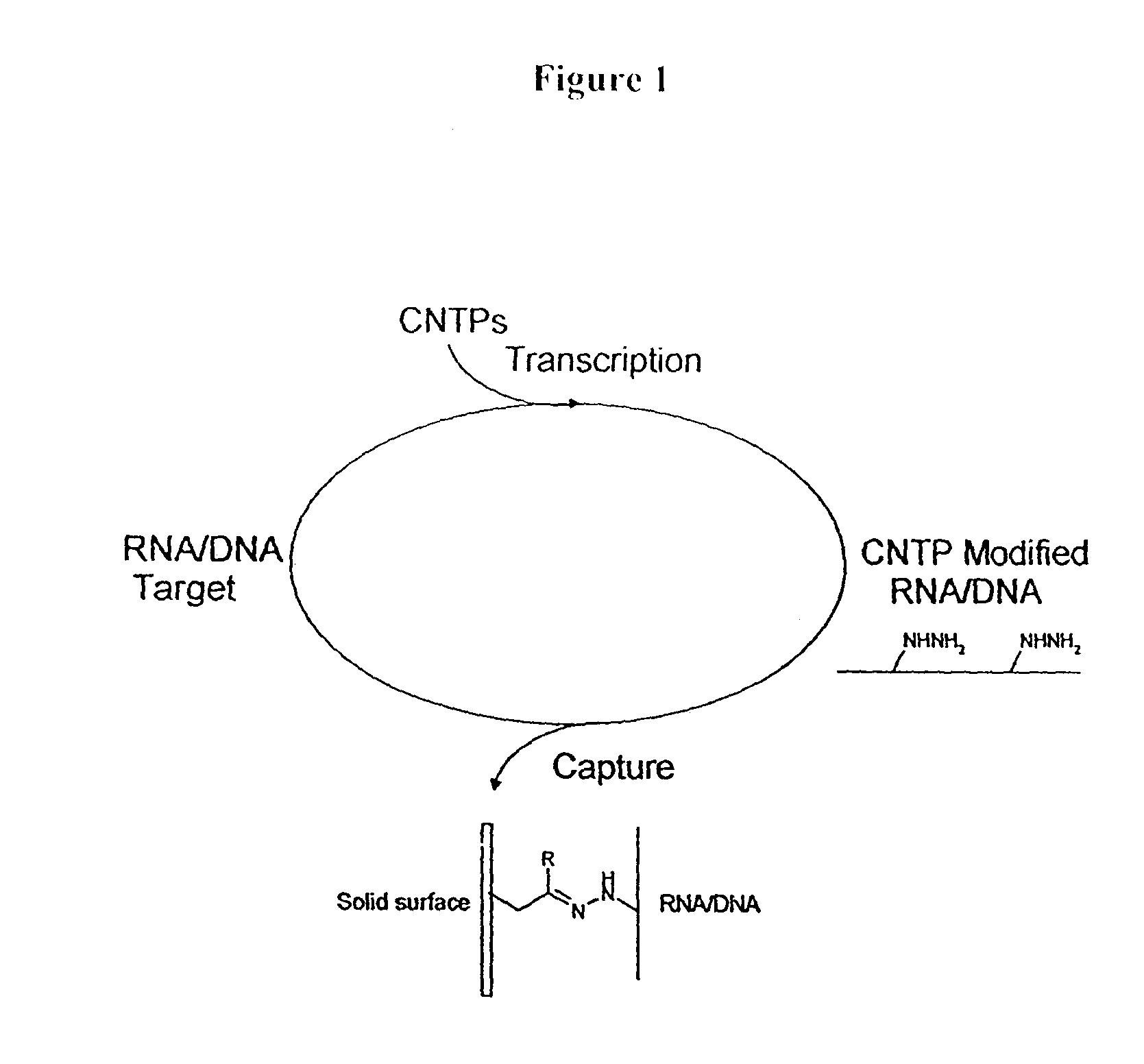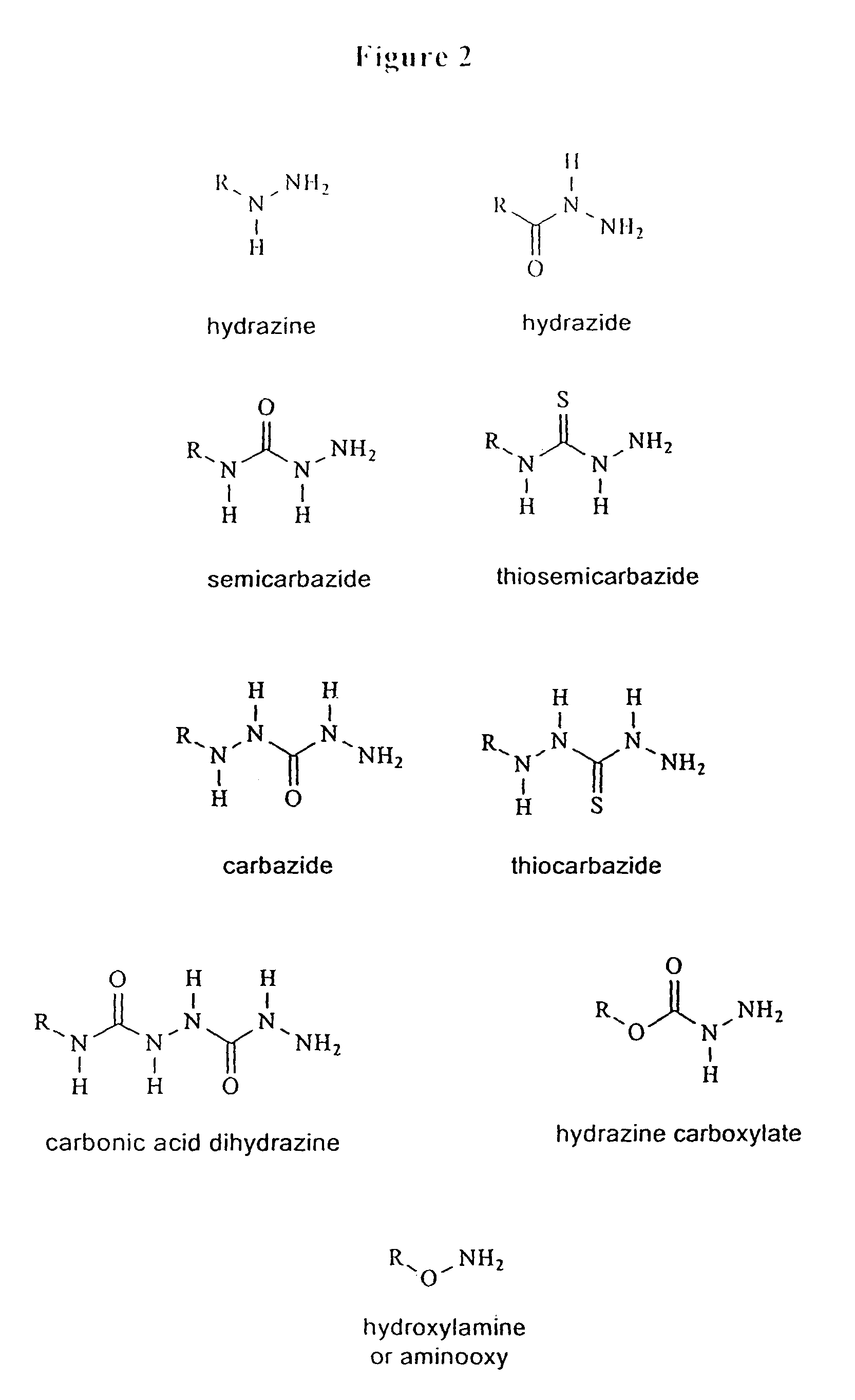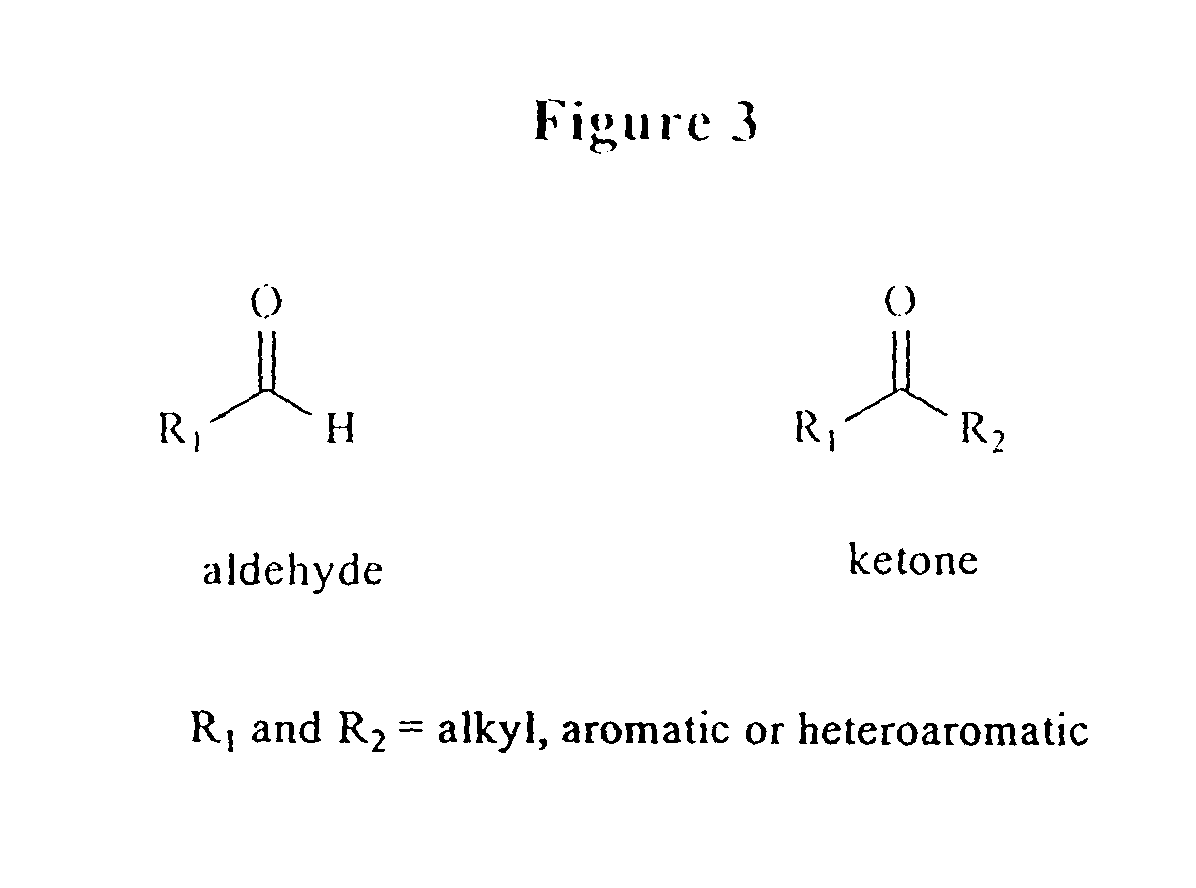Triphosphate oligonucleotide modification reagents and uses thereof
a technology of oligonucleotide modification and reagents, which is applied in the preparation of carboxylic acid nitrile, biochemistry apparatus and processes, organic chemistry, etc., can solve the problems of inability to prepare activated functionalities such as succinimidyl esters or maleimides, the method of oligonucleotide labeling is limited, and the label preparation is expensiv
- Summary
- Abstract
- Description
- Claims
- Application Information
AI Technical Summary
Benefits of technology
Problems solved by technology
Method used
Image
Examples
example 1
Synthesis of aldehyde triphosphate
[0255]5-Amino substituted cytidine triphosphate 5-1 was prepared from 2-deoxycytidine as described in U.S. Pat. No. 5,242,796. As shown in FIG. 5, triphosphate 5-1 was dissolved in 0.1 M phosphate, 0.15 M sodium chloride, pH 7.4 and diluted with DMF. A solution of succinimidyl 4-formylbenzoate (5-2; mmol, equiv, Pierce Chemicals, Rockford, Ill.) in DMF was added to the triphosphate. The reaction mixture was incubated at room temperature and the progress of the reaction was followed by C-18 reverse phase HPLC (mobile phase 1: 50 mM triethylammonium acetate, pH 7.4, mobile phase 2: acetonitrile; gradient: 0% 2 to 2.0% 2 over 20 min, 200% 2 to 50% 2 over 5 min; flow: 2 mL / min). Further reagent was added to drive the reaction to completion.
[0256]The product 5-3 was isolated by ion-exchange HPLC using DEAE-Sephadex with a gradient from water (500 mL) to 0.6 M LiCl (500 mL) as the eluting buffer. The compound was desalted by precipitation from acetone / MeO...
example 2
A. Synthesis of N-(6-fluoresceinyl)-N′-(6-aminohexyl)-thiourea
[0257]As shown in FIG. 6, this compound was obtained by dissolving fluorescein isothiocyanate 6-1 (FITC) (1.03 g, 2.64 mmol) in 15 ml of MeOH in a 50 ml oven dried flask. This formed an orange suspension that was allowed to stir for 5 min at room temperature after which 1,6-diaminohexane (1.23 g, 10.56 mmol) was added all at once and the solution instantly went homogeneous. This solution was allowed to stir at room temperature for 48 hr and was covered with aluminum foil after which the reaction was completely evaporated in vacuo. The residue was dissolved in a solution of 1:1:3 EtOAc:MeOH:AcOH (4 ml). This solution was loaded onto a column packed with 61 g of silica. The column had an inner radius of 2 cm. 500 ml of 1:1:2 EtOAc:MeOH:AcOH was pushed through the column by pressure and fractions were collected and analyzed by TLC. The product 6-2 had a Rf of 0.68 and this spot was collected and evaporated to dryness followe...
example 3
Incorporation of aldehyde triphosphate 5-3 in PCR Reaction
[0260]
OligonucleotideSequenceSourceM13Fcomplement5′GGGT CGT GAC TGG GAA AACTrilink(SEQ ID NO:1)M13FGTT TTC CCA GTC ACG ACGenosys(SEQ ID NO:2)M13RAGC CCA TAA CAA TTT CACGenosysACA GGA(SEQ ID NO:3)TF3AT GGA AGA ATC TCT CCGenosys(SEQ ID NO:4)Ferritin283GGA ACA TGC TGA AAA CTGGenosys(SEQ ID NO:5)b-actin 300TCA CCA ACT GGG ACG ACAGenosysTG(SEQ ID NO:6)
Oligonucleotide suppliers: Genosys, Inc (Woodlands, Tex.); Trilink Biotechnologies (San Diego, Calif.).
[0261]The incorporation of aldehyde-dCTP into PCR generated double stranded DNA was performed using Stoffel Taq Polymerase (Perkin-Elmer) using buffer provided by the manufacturer and 3.5 mM MgCl2. Deoxynucleotides dGTP, dATP and TTP were present at 0.6 mM while primers M13 and M13 R (see sequences above) were used at 1 μM. The DNA template was plasmid 80109 from the IMAGE Consortium collection of human cDNAs. PCR used different amounts of dCTP and aldehyde-dCTP at combined concentr...
PUM
 Login to View More
Login to View More Abstract
Description
Claims
Application Information
 Login to View More
Login to View More - R&D
- Intellectual Property
- Life Sciences
- Materials
- Tech Scout
- Unparalleled Data Quality
- Higher Quality Content
- 60% Fewer Hallucinations
Browse by: Latest US Patents, China's latest patents, Technical Efficacy Thesaurus, Application Domain, Technology Topic, Popular Technical Reports.
© 2025 PatSnap. All rights reserved.Legal|Privacy policy|Modern Slavery Act Transparency Statement|Sitemap|About US| Contact US: help@patsnap.com



